This is how sustainable ZO is
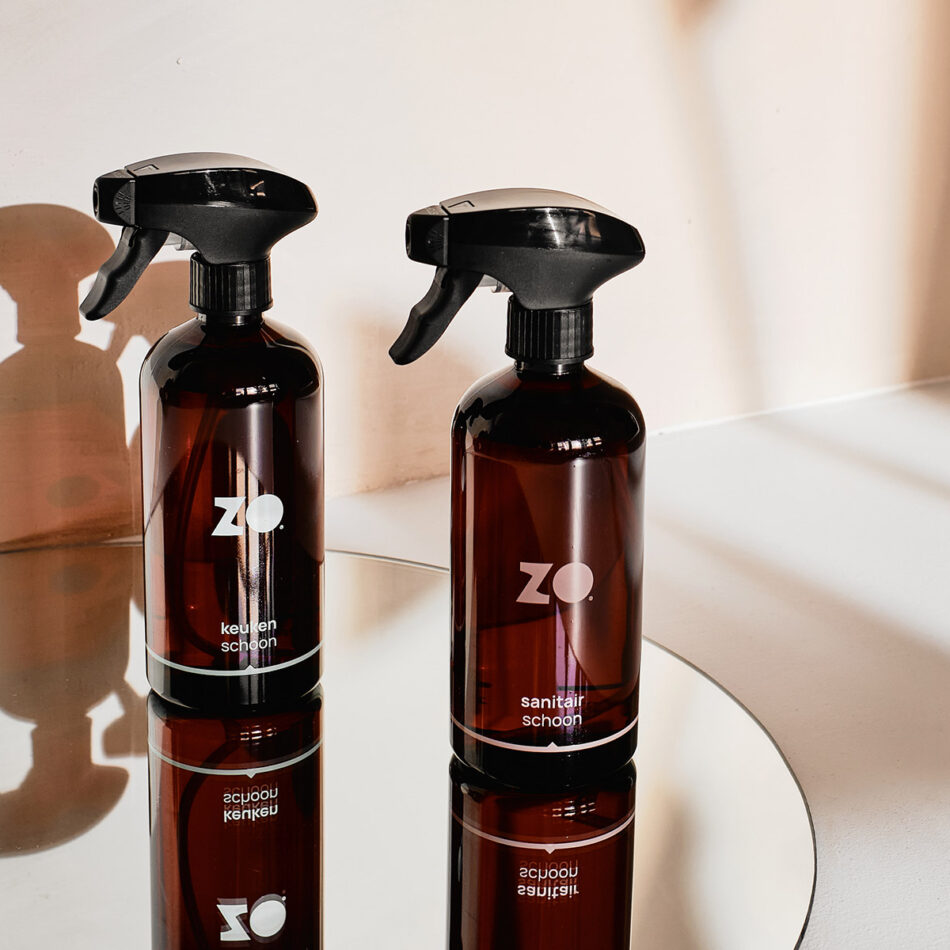
We are often asked whether ZO is truly more sustainable. The answer is, of course, yes. And we’d be happy to explain it to you in detail. So sit down and get ready to learn.👇🏻
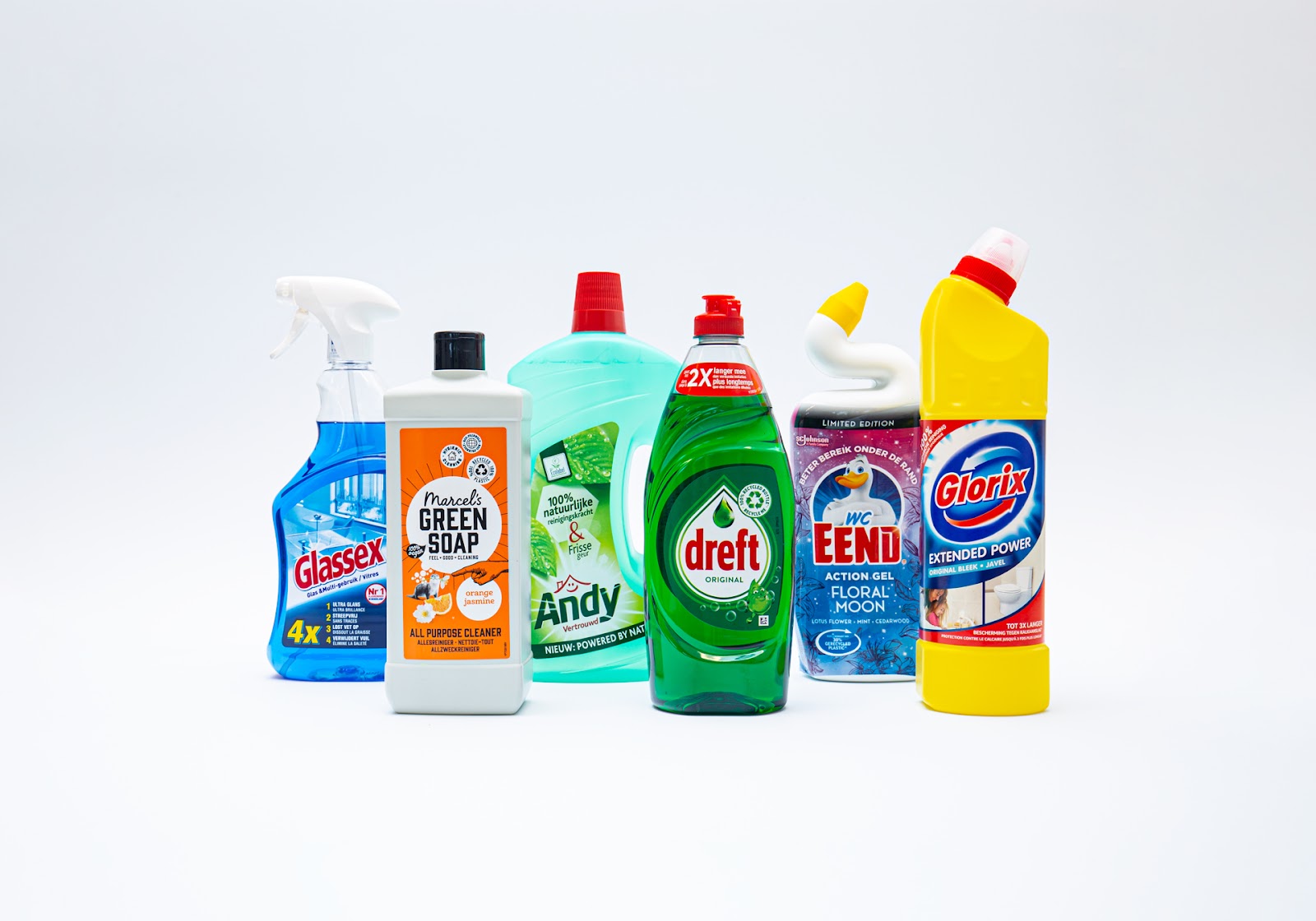
Stop wasting bottles and transporting water
We all know these products: each one packaged in plastic bottles that are thrown away after use. And without exception, they all consist of more than 95% water. Water that is mixed with chemicals in factories.
500 million bottles and 475 million liters of water
Every year, we waste 500 million bottles and transport unnecessarily 475 million liters of water in the Netherlands and Flanders. If you were to line up all those bottles, you could circle the earth with them. And yet that water comes straight from our tap at home. You can save all of this by no longer adding water to your cleaning products. This also saves a lot of oil used as raw material for bottles and as fuel for transport.
A different way of cleaning
With a different way of cleaning, we stop this waste.

Are ZO products really more sustainable?
Why are ZO’s forever bottles made of plastic? Is that really more sustainable than glass? Which packaging is the most environmentally friendly? Are plastic refill bags more sustainable than paper bags? And are microfiber cloths sustainable or not?
Everything has been carefully considered
At ZO, we have examined all options and looked for the most sustainable solution. Our goal is to create a product that minimizes environmental impact from raw material production to use. We consider factors such as production of raw materials, reuse, recycling options, safety, packaging weight, and transport frequency. We also consider how long a product lasts and how to prevent waste.
The most sustainable option
When it comes to convenience, safety, foaming and spraying, ZO’s forever bottles are truly the most sustainable option. We can certainly back up that claim, and we’re going to do so. So yes, this is going to be a bit of a long article, but you’ll have all the answers about the sustainability of our circular system. So sit back and enjoy.
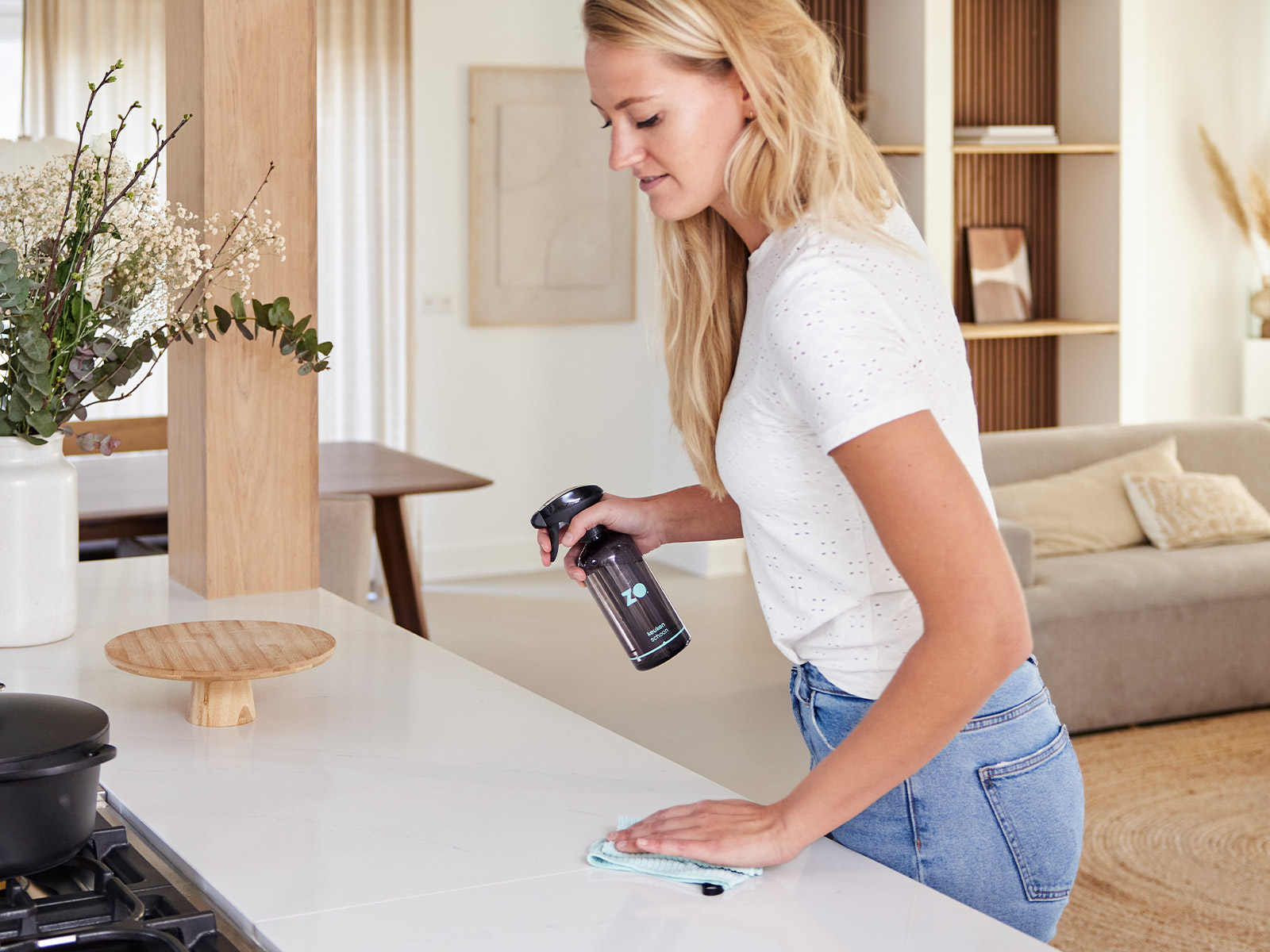
How do we clean now?
We prefer to clean with the traditional bucket of soapy water. And if we want to spray, we prefer to buy ready-to-use products like Glassex, WC Eend, and Glorix Bleach. Brace yourself:
01: Every year we consume about 500 million bottles that we throw away after use.
02: That’s 50 plastic packages per household per year.
03: Every year we transport unnecessarily 475 million liters of water that is filled in factories in Europe while we have that water in our own tap.
04: How much soap and cleaner you waste by pouring too much in the bucket, or using more than a drop of dishwashing liquid, or pumping your hand soap four times, you know best. There are no figures on waste, but if you know that every Dutch person uses more than a liter of cleaner and soap per week on average, you can draw the conclusion that a lot is being wasted.
05: Most cleaners contain chemicals that are not broken down in nature. What does not occur in nature, is not recognized by nature and is also not broken down by nature. It is therefore 100% or nothing. Because bacteria have to break down the cleaners and soaps again. Perfumes are usually also chemical, because natural perfumes are more expensive and more difficult to make.
06: You don’t like to show cleaning bottles. So we hide those bottles in a cabinet. That means you have to make an effort to clean, which means you clean less often and get more buildup. Result: you postpone the cleaning even longer or leave it to someone else.
It’s not made easy for you either
Of course, it’s not easy to replace your traditional bucket of soap, your trusted scents, and your bleach. And on top of that, you won’t find many of the longer-lasting cleaning products in the supermarket. In the supermarket, you judge on price in a few seconds, and the ready-to-use products always win over the concentrates. But ready-to-use cleaners come in disposable plastic packaging that we throw away after use. Producers and retailers make much more profit from ready-to-use cleaners and cleaners for a bucket of soap. After all, you’re buying 95% water. Calculate for yourself what water from your tap costs and what a bottle of cleaner in the supermarket costs.

The biggest impact
Sustainable cleaning is not just about raw materials and packaging. The biggest impact is made by keeping your environment clean without waste. That means easy, safe and fast right after use.
When it comes to cleaning in general, we can draw the following conclusions:
- We all love a clean and tidy house, but who loves cleaning?
- Cleaning with a sprayer and microfiber cleans better than a bucket of soapy water. That’s why hospitals in the Netherlands and Belgium are cleaned this way.
- Over 50,000 people clean with ZO every day and are happy with the results: it works.
- We have developed a new way of cleaning with ZO that is easy, sustainable, and fun.
- With ZO, you have no waste. Our packaging lasts a long time, and you can eventually return it to us for recycling.
Prefer liquid
ZO’s cleaners, soaps, and dishwashing liquids are all liquid. We made a deliberate choice to do so because we want our products to be safe for everyone, easy to mix, and have a long shelf life. Tablets, soap bars, or powders may be packaged in paper, but that is their only advantage. The solid form compromises the quality, safety, and convenience that are essential to us.
Why reuse is not possible
These liquid soaps and cleaners must be stored somewhere. Delivering them door-to-door with a tanker truck is logistically and practically unfeasible. Refilling bags and bottles with soap is also impractical. Have you ever tried to clean a used soap bottle? Noticed how much water and time it takes before foam comes out of the bottle? Exactly, it works the same way with machines: it takes too much time, energy, and water. Therefore, reuse is not possible.
The most sustainable packaging
The best and most environmentally friendly packaging depends on various factors. We chose a plastic bag because it takes up the least space during transport and is leakproof. As a result, the product has a shelf life of three years. A plastic bag is easy to refill and takes up little space, so you can store it anywhere.
For us, it is important that the packaging lasts as long as possible, that the products can be stored in them for a long time, that they are easy to work with, recyclable, and cause minimal transportation. That is why we could not help but choose the refill bag.
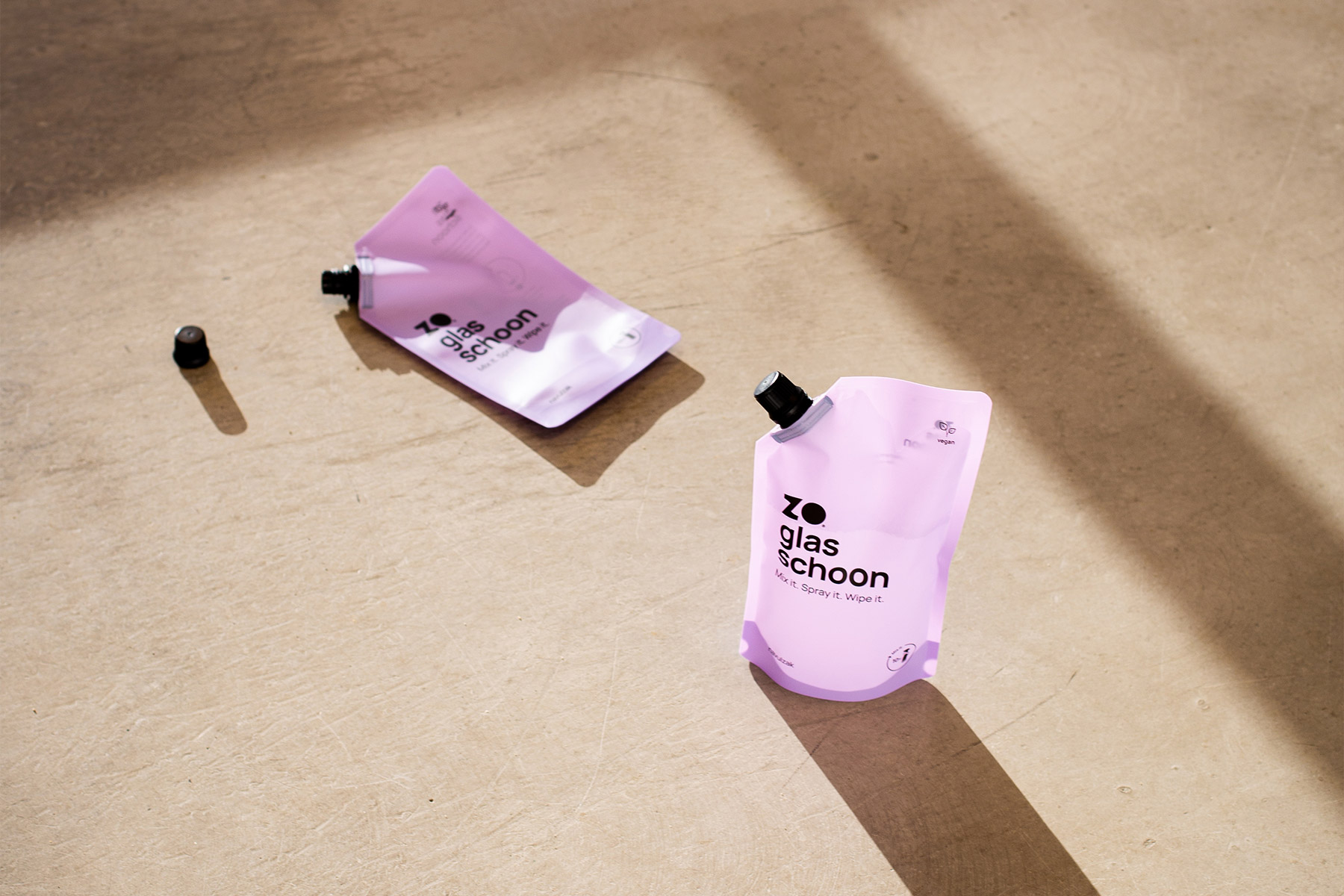
Difference between reuse and recycle
Maybe it’s common knowledge for you, but before we continue: reusing is not the same as recycling. You can reuse a package if there aren’t too many actions involved in reusing it. So, you can reuse the cloths and forever bottles. With a refill bag, you can refill a bottle every time it’s empty. Once the bag is empty, we recycle it. Recycling only happens when the package reaches the end of its life. The old material is processed into new raw materials for new products.
No waste
To make sure you have no waste with ZO and to prevent our products from ending up in an incinerator, we recycle our products ourselves. You keep the used refill bags in the box we delivered them in. Once the box is full, you can send it back to us for free using our special reply number. We’ll take care of the rest.
This is why we chose for PET
PET is the material that costs the least energy to produce and is the best for reuse (it can never break) and recycling. PET bottles last a lifetime and can be refilled every time (reuse). That saves new raw materials, energy, and waste. The spray nozzles and foamers only exist in plastic. A spray nozzle can spray 40,000 times.
Less environmental impact
When your ZO sprayer reaches the end of its life, the bottles and spray nozzles can be 100% recycled. By using reusable packaging with concentrated products, you create less environmental impact than when you buy disposable packaging with ready-to-use products. We’ll be conducting a life cycle analysis (LCA) soon, but if you think logically, you can guess the outcome.
That saves …
… excessive use
Did you know that you often use too much cleaning product? We call this overdosing. You are used to adding an extra splash of product, thinking it will give you a better result. But without realizing it, you are burdening the environment.
With ZO, you always use the right amount. An average household saves up to 10 liters of cleaner per year with ZO. Our handy sprayers ensure that you don’t use too much. You fill the sprayer up to the line with cleaner and the rest with water. The fine mist of the sprayer spreads the cleaner evenly, covering a large surface. The microfiber cloth ensures an even better result.
ZO clean hands is a foam, which is three times more efficient than liquid soap. One pump dispenses 0.75 ml of soap, while a pump of liquid soap dispenses 2.25 ml per pump. With each pump, you save 1.5 ml of soap. With ZO clean hands, you save 65% water and use 65% less soap. That’s a double win.
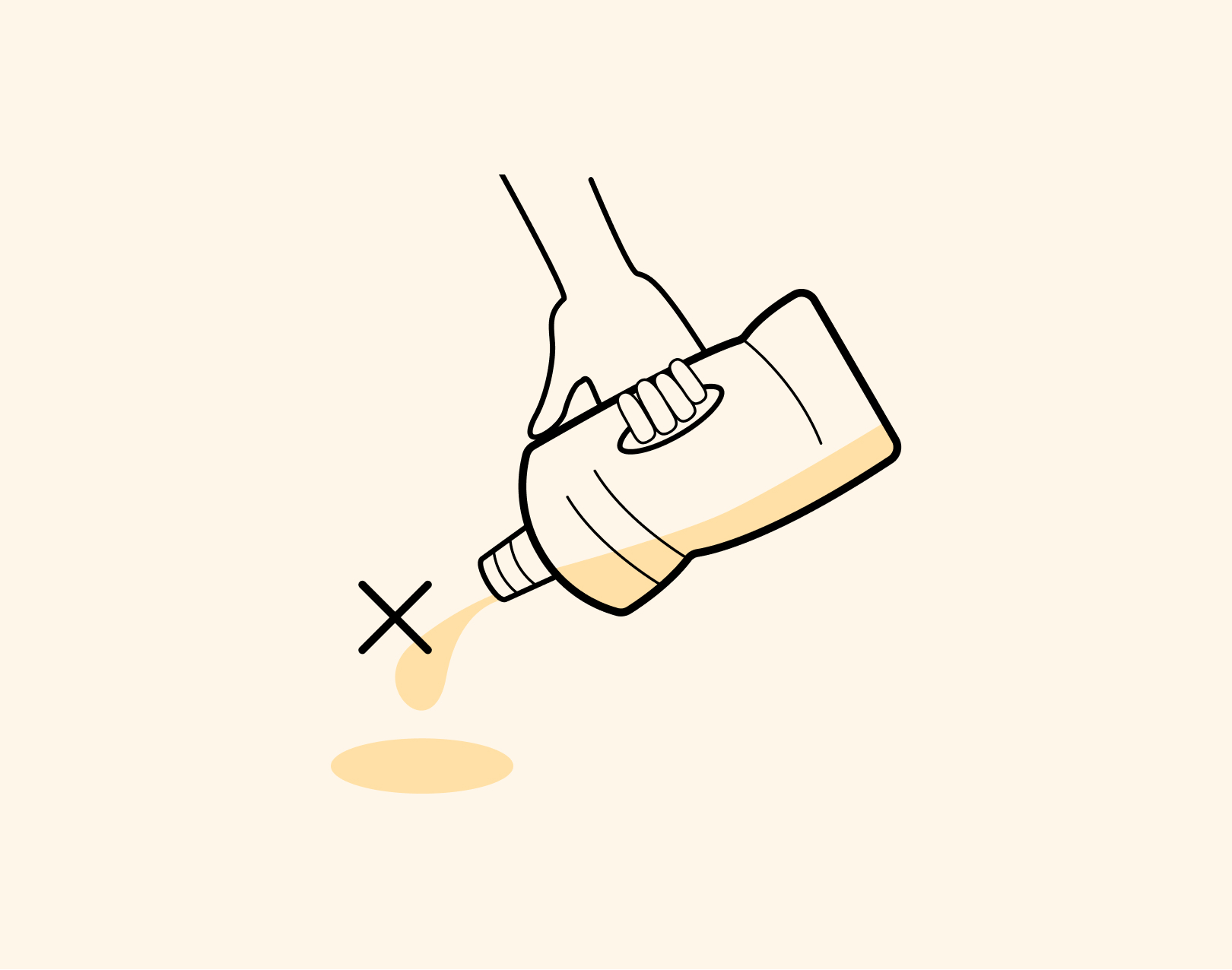
…unnecessary transportation
At ZO, we work with concentrated cleaners. So we don’t transport unnecessary water, because you add it yourself. With 1 refill bag, you can make up to 5 liters of cleaner and save 10 plastic bottles. So this also saves transportation of used and new bottles between factory, recycling, supermarket, and you.

…waste
Nothing is more sustainable than using products for a long time. With ZO, you say goodbye to single-use plastic. Because our ZO sprayers and foamers are forever: you have them for life. That saves an average household about 52 plastic bottles each year. Does your sprayer break anyway? Send it back and you’ll get a new one. We recycle the sprayer, just like all other ZO packaging you no longer use. Want to learn more? Check out our recycling page.
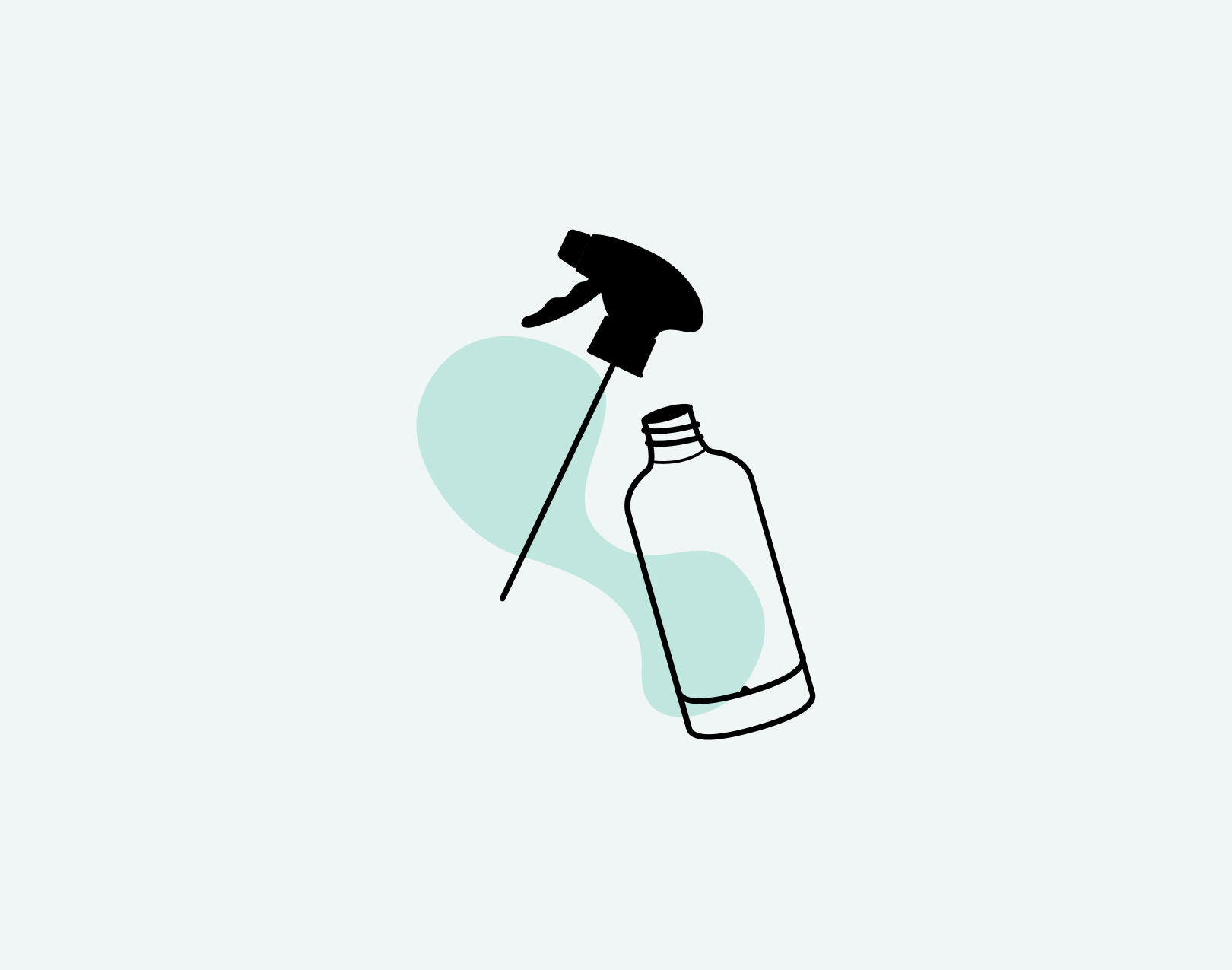
…time
If you clean something immediately after using it every day, cleaning will hardly take any extra time, and your home or workplace will stay clean.
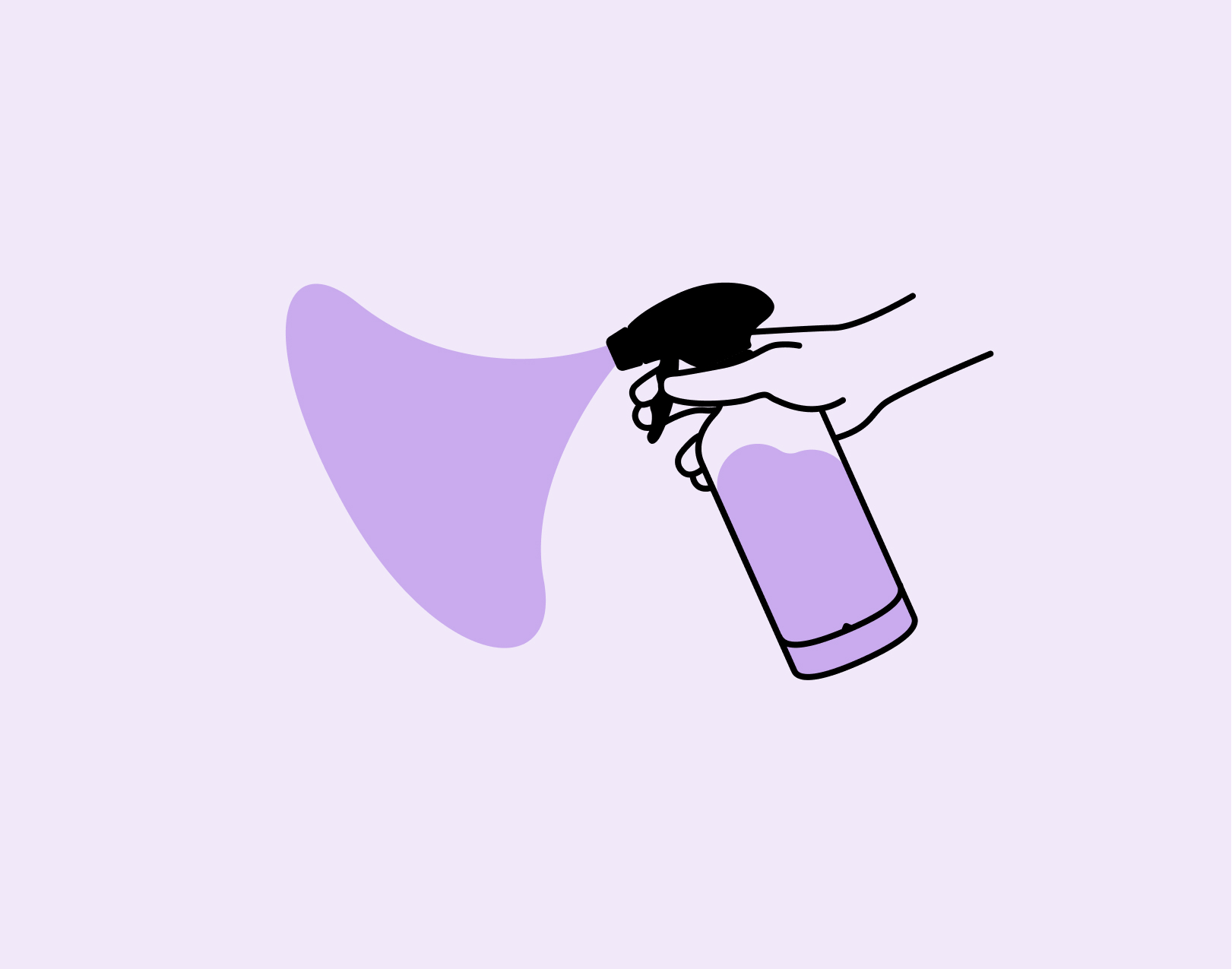
… energy
With ZO products, you don’t need hot water. You fill the bottle up to the line with cold water and you can start spraying right away. You can easily fill a bucket with 5 liters of hot water, and before the water reaches the right temperature, you may have already wasted 5 liters if you don’t have a boiler. For 100 buckets of water, you need 1,000 liters of hot water, which consumes 70 kWh of energy. With ZO, you can save up to 70 kWh as a household.

… money
Using ZO products helps you save money in the long run. With our sprayers and foamers, you never use more than you need, making cleaning efficient and cost-effective. Additionally, because we offer just four products that can be used to clean everything in your home or workplace, you won’t need to purchase unnecessary cleaning products.

Do ZO plastic bottles release microplastics?
We sometimes receive the question whether our bottles release microplastics. The answer is no. The bottles are not flexible. The concentrate (the cleaner before you mix it with water) does not have hazard symbols, so you are completely safe with the ZO products that you mix with water. Moreover, the ingredients are natural, which means that the environment is not burdened.
Behind the scenes
Our sprayers now consist of 47% recycled plastic, so we don’t compromise on quality. Meanwhile, we are working on a new bag made of one type of plastic that is even more recyclable. We are also working on a subscription service, so you always have enough cleaning supplies at home or at work and we can determine when to deliver. We deliver as much as possible by bike or electric vehicles.

Thank you for sharing about ZO’s sustainable cleaning products and practices. It’s important for us to be aware of the impact of our everyday choices on the environment and to make conscious decisions to reduce waste and preserve our planet.
If you have any questions about sustainable cleaning, please reach out to us at info@zoschoon.nl.
Share this article on social media